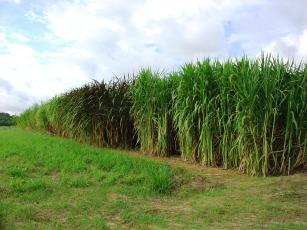Association of morphophysiological, productive and structural aspects on elephantgrass management under intermittent defoliation
Association of morphophysiological, productive and structural aspects on elephantgrass management under intermittent defoliation

Photo: URQUIAGA, Segundo
Grassland intensification strategies such as fertilization and irrigation can be used to shorten the period required for recovery of paddocks under rotational management and thus to increase the productivity. In rotational stocking grazing, the definition of the resting and grazing periods of the paddocks, besides determining the total number of paddocks, exerts a great influence on the quantity and quality of the forage produced. The post-grazing residue, determined by the grazing period and the stocking rate, has a great influence on the re-growth of the forage crop and also on the accumulated forage production for the next grazing period, in terms of quantity, quality and structure. The aim is to maximize the production of leaves, to ensure good efficiency of the use of the forage and to avoid the stem elongation and the accumulation of senescent material. The duration of the resting period can be defined according to some criteria, such as stabilization of organic reserves and obtaining the maximum averaged growth rate. Another criterion that has great relation with the production is the interception of the incident radiation, which tends to stabilize around 95%. In elephantgrass, these studies are scarce, especially when it comes to the association of productive, structural and qualitative indicators in response to frequency and intensity of defoliation determined according to morphophysiological criteria. The aim of this study was to evaluate on the dry and rainy seasons, the productive traits and the nutritive value of two clones of dwarf elephantgrass under different management strategies. The study was carried out in a factorial 2 × 2 × 3; two clones, BRS Kurumi and CNPGL 94-34-3, two residual height, 25 and 45 cm, and three frequencies of defoliation according to the light interception (LI) of 90, 95 and 100 %. The traits evaluated were herbage mass, leaf mass, canopy height, leaf-stem ratio, the average defoliation interval, besides the contents of CP, NDF, ADF and IVDMD of forage harvested. Both clones showed high forage production. Higher herbage mass harvested by cutting was observed in the residue of 25 cm that, during the rainy season was 3.7 and 3.2 t/ha, respectively for residues of 25 and 45 cm. The BRS Kurumi had a shorter interval between cuts with lower forage production per cut, but higher within the stations. It also showed higher leaf-stem and higher crude protein content and lowest NDF concentration and thus higher coefficient of IVDMD compared to the CNPGL 94-34-3. The increase in LI increased herbage mass harvested by cutting, but reduces the number of cuts. It also reduces the leaf-stem ratio and increases the height of the canopy and the NDF content. In the rainy season, with fertilization, the defoliation interval should consider an LI between 90 and 95% what occurs with 19 days or 77 cm for the BRS Kurumi and with 37 days or 111 cm for the CNPGL 94-34-3.
Ecosystem: Atlantic Forest, Cerrados Region
Status: Completed Start date: Sat Sep 01 00:00:00 GMT-03:00 2007 Conclusion date: Mon Aug 31 00:00:00 GMT-03:00 2009
Head Unit: Embrapa Dairy Cattle
Project leader: Carlos Augusto de Miranda Gomide
Contact: carlos.gomide@embrapa.br
